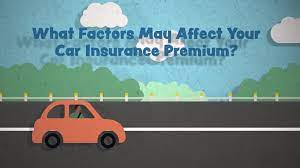The Impact of Location on Car Insurance Rates: Understanding the Factors
Insurance companies consider various factors associated with your location to assess the level of risk you pose as a driver. From population density and crime rates to traffic congestion and weather patterns, numerous elements influence insurance premiums. In this article, we'll delve into the ways in which location affects car insurance rates and why it's essential for drivers to understand these factors.
Population Density
Population density refers to the number of people living within a specific area, typically measured per square mile. Areas with higher population densities tend to have more vehicles on the road, leading to increased traffic congestion, higher accident rates, and a greater likelihood of theft or vandalism. As a result, drivers in densely populated areas often face higher insurance premiums compared to those in rural or less densely populated areas.
Crime Rates
Crime rates, including rates of auto theft and vandalism, are closely linked to insurance premiums. Areas with higher crime rates pose a greater risk to insurers, as vehicles are more susceptible to theft, break-ins, and malicious damage. Consequently, drivers in areas with elevated crime rates may experience higher insurance costs to offset the increased likelihood of filing claims for theft or vandalism-related incidents.
Traffic Congestion
Traffic congestion not only contributes to higher accident rates but also increases the severity of accidents when they occur. Congested urban areas with heavy traffic flow are more prone to rear-end collisions, fender benders, and other accidents, leading to a greater number of insurance claims. As a result, drivers in regions with significant traffic congestion may face higher insurance premiums to account for the heightened risk of accidents and associated costs.
Weather Patterns
Weather patterns, including severe weather events such as hurricanes, tornadoes, hailstorms, and flooding, can impact insurance rates. Areas prone to extreme weather conditions are more susceptible to vehicle damage, property destruction, and increased insurance claims. Insurance companies adjust premiums accordingly to reflect the elevated risk of weather-related incidents in these regions.
Other Factors
In addition to population density, crime rates, traffic congestion, and weather patterns, several other location-specific factors can influence car insurance rates:
State Regulations: Insurance regulations vary from state to state, affecting minimum coverage requirements, liability limits, and other factors that can impact premiums.
Uninsured Motorist Rates: High rates of uninsured or underinsured motorists in certain areas can lead to increased insurance costs for drivers who opt for uninsured/underinsured motorist coverage.
Urban vs. Rural Areas: Drivers in urban areas generally face higher insurance premiums due to higher accident rates and increased exposure to theft and vandalism compared to drivers in rural areas.
Conclusion
Where you live significantly impacts your car insurance rates, with factors such as population density, crime rates, traffic congestion, and weather patterns playing crucial roles in determining premiums. By understanding these location-specific influences, drivers can better comprehend why insurance rates vary and take proactive steps to mitigate risks and minimize costs. While location is just one of many factors that insurers consider when determining premiums, its impact underscores the importance of informed decision-making when selecting car insurance coverage.


Post a Comment for " The Impact of Location on Car Insurance Rates: Understanding the Factors"